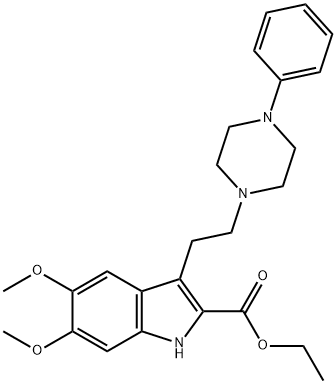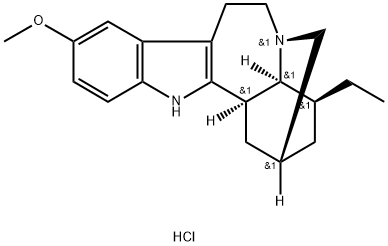Bufotenine
- CAS NO.:487-93-4
- Empirical Formula: C12H16N2O
- Molecular Weight: 204.27
- MDL number: MFCD00130179
- EINECS: 207-667-9
- SAFETY DATA SHEET (SDS)
- Update Date: 2024-12-18 13:37:16

What is Bufotenine?
Chemical properties
Bufotenine is an indole alkaloid obtained from the seeds and leaves of Piptadenia peregrine and P. macrocarpa. It has also been isolated from the skin glands of toads (Bufo species). The base is typically seen as white crystalline powder and the oxalate hydrate as a lavender to brown powder. The oxalate hydrate is slightly soluble in chloroform and can be separated from chloroform insoluble material for analysis.
History
Bufotenin was isolated from toad skin, and named by the Austrian chemist Handovsky at the University of Prague during World War I.The structure of bufotenine was confirmed in 1934 by Heinrich Wieland's laboratory in Munich, and the first reported synthesis of bufotenine was by Toshio Hoshino and Kenya Shimodaira in 1935.
The Uses of Bufotenine
Controlled substance (hallucinogen).
Bufotenine is a hallucinogenic serotonin analog found in frog and toad skins, mushrooms, plants and some mammals (especially in the brains, plasma, and urine of schizophrenics). It is a potent hallucinogen used in its natural state by several shaman sects and in some drug abuse situations in the United States and Australia. It causes schizophrenia and other psychotic symptoms.
Definition
ChEBI: Bufotenine is a tertiary amine that consists of N,N-dimethyltryptamine bearing an additional hydroxy substituent at position 5. It has a role as a hallucinogen and a coral metabolite. It is a tryptamine alkaloid and a tertiary amine. It derives from a N,N-dimethyltryptamine.
Properties of Bufotenine
| Melting point: | 62-64°C |
| Boiling point: | bp0.1 320° |
| Density | 1.0565 (rough estimate) |
| refractive index | 1.6000 (estimate) |
| Flash point: | 2℃ |
| storage temp. | Refrigerator, Under Inert Atmosphere |
| solubility | Bufotenine is soluble in dilute acids and alkalis. |
| pka | 10.11±0.40(Predicted) |
| EPA Substance Registry System | 1H-Indol-5-ol, 3-[2-(dimethylamino)ethyl]- (487-93-4) |
Safety information for Bufotenine
| Signal word | Danger |
| Pictogram(s) |
 Flame Flammables GHS02  Exclamation Mark Irritant GHS07 |
| GHS Hazard Statements |
H225:Flammable liquids H319:Serious eye damage/eye irritation |
| Precautionary Statement Codes |
P210:Keep away from heat/sparks/open flames/hot surfaces. — No smoking. P280:Wear protective gloves/protective clothing/eye protection/face protection. P305+P351+P338:IF IN EYES: Rinse cautiously with water for several minutes. Remove contact lenses, if present and easy to do. Continuerinsing. |
Computed Descriptors for Bufotenine
New Products
Tert-butyl bis(2-chloroethyl)carbamate (S)-3-Aminobutanenitrile hydrochloride N-Boc-D-alaninol N-BOC-D/L-ALANINOL N-octanoyl benzotriazole 3,4-Dibenzyloxybenzaldehyde 4-Hydrazinobenzoic acid 1,1’-CARBONYLDIIMIDAZOLE R-2-BENZYLOXY PROPIONIC ACID 3-NITRO-2-METHYL ANILINE 4-IODO BENZOIC ACID 4-HYDROXY BENZYL ALCOHOL 4-(3-chloropropyl)morpholine phenylhydrazine hydrochloride (2-Hydroxyphenyl)acetonitrile 4-Bromopyrazole 5-BROMO-2CYANO PYRIDINE 5,6-Dimethoxyindanone 5-broMo-2-chloro-N-cyclopentylpyriMidin-4-aMine 4-methoxy-3,5-dinitropyridine 2-(Cyanocyclohexyl)acetic acid 2-aminopropyl benzoate hydrochloride 1-(4-(aminomethyl)benzyl)urea hydrochloride tert-butyl 4- (ureidomethyl)benzylcarbamateRelated products of tetrahydrofuran


![2-[2-(5-METHOXY-1H-INDOL-3-YL)-ETHYL]-ISOINDOLE-1,3-DIONE](https://img.chemicalbook.in/StructureFile/ChemBookStructure20/GIF/CB6842909.gif)


![3-(5-METHOXY-1H-INDOL-3-YL)-1-[3-(TRIFLUOROMETHYL)PHENYL]DIHYDRO-1H-PYRROLE-2,5-DIONE](https://img.chemicalbook.in/StructureFile/ChemBookStructure4/GIF/CB8758873.gif)


You may like
-
 (9H-fluoren-9-yl)methyl (2,5-dioxopyrrolidin-1-yl) carbonate 82911-69-1 98.0%View Details
(9H-fluoren-9-yl)methyl (2,5-dioxopyrrolidin-1-yl) carbonate 82911-69-1 98.0%View Details
82911-69-1 -
 13057-17-5 95.0%View Details
13057-17-5 95.0%View Details
13057-17-5 -
![2-Nitro-8,9-dihydro-5H-benzo [7] annulen-7(6H)-one 98.0%](https://img.chemicalbook.in//Content/image/CP5.jpg) 2-Nitro-8,9-dihydro-5H-benzo [7] annulen-7(6H)-one 98.0%View Details
2-Nitro-8,9-dihydro-5H-benzo [7] annulen-7(6H)-one 98.0%View Details
740842-50-6 -
 4-bromoaniline 106-40-1 99.0%View Details
4-bromoaniline 106-40-1 99.0%View Details
106-40-1 -
 1421517-99-8 99.0%View Details
1421517-99-8 99.0%View Details
1421517-99-8 -
 5-bromo-2-chlorobenzoic acid 99.0%View Details
5-bromo-2-chlorobenzoic acid 99.0%View Details
21739-92-4 -
 2-methyl-5-nitrophenol 98.0%View Details
2-methyl-5-nitrophenol 98.0%View Details
5428-54-6 -
 15761-38-3 97.0%View Details
15761-38-3 97.0%View Details
15761-38-3